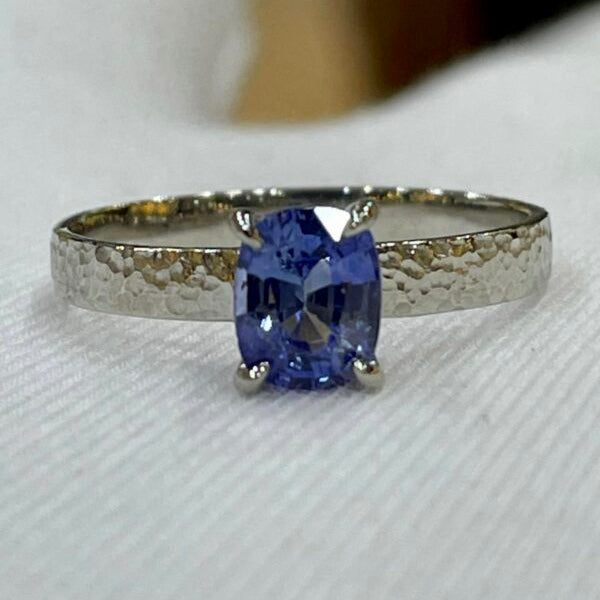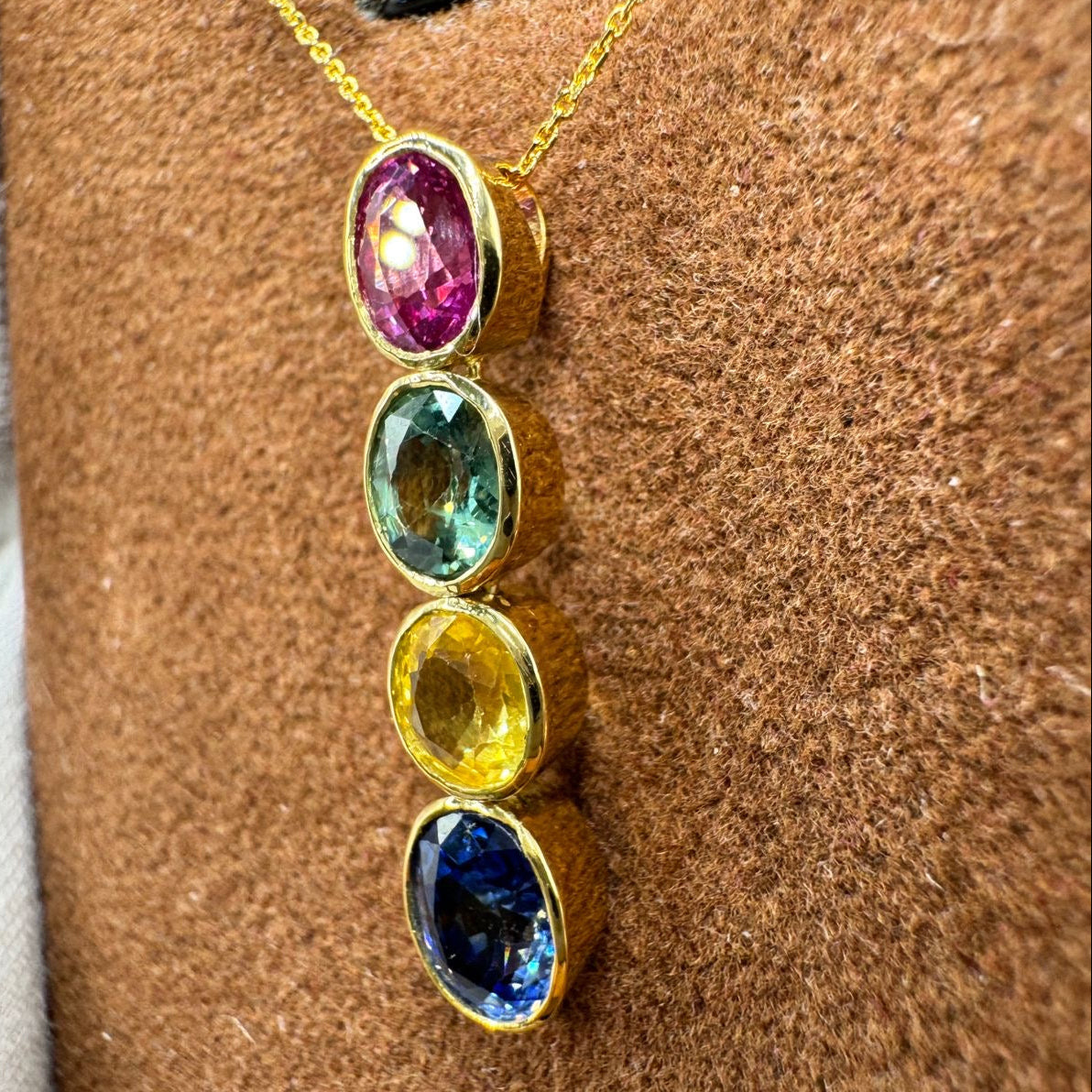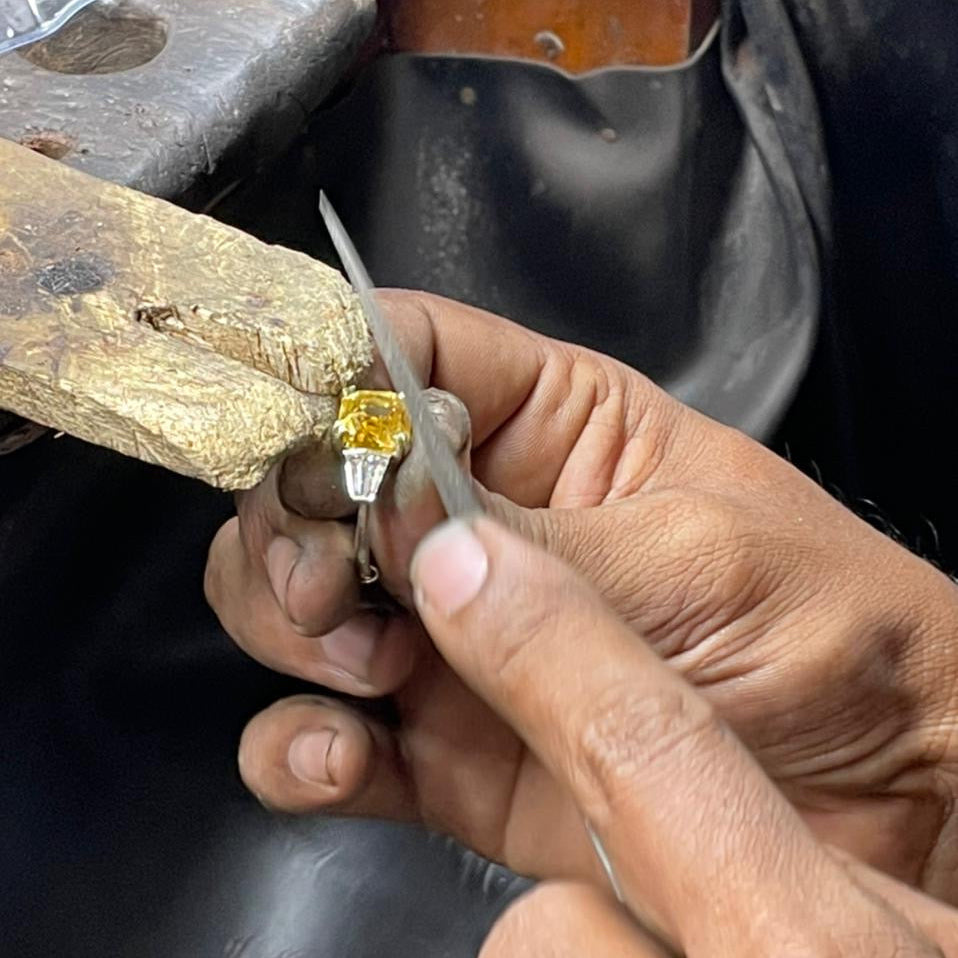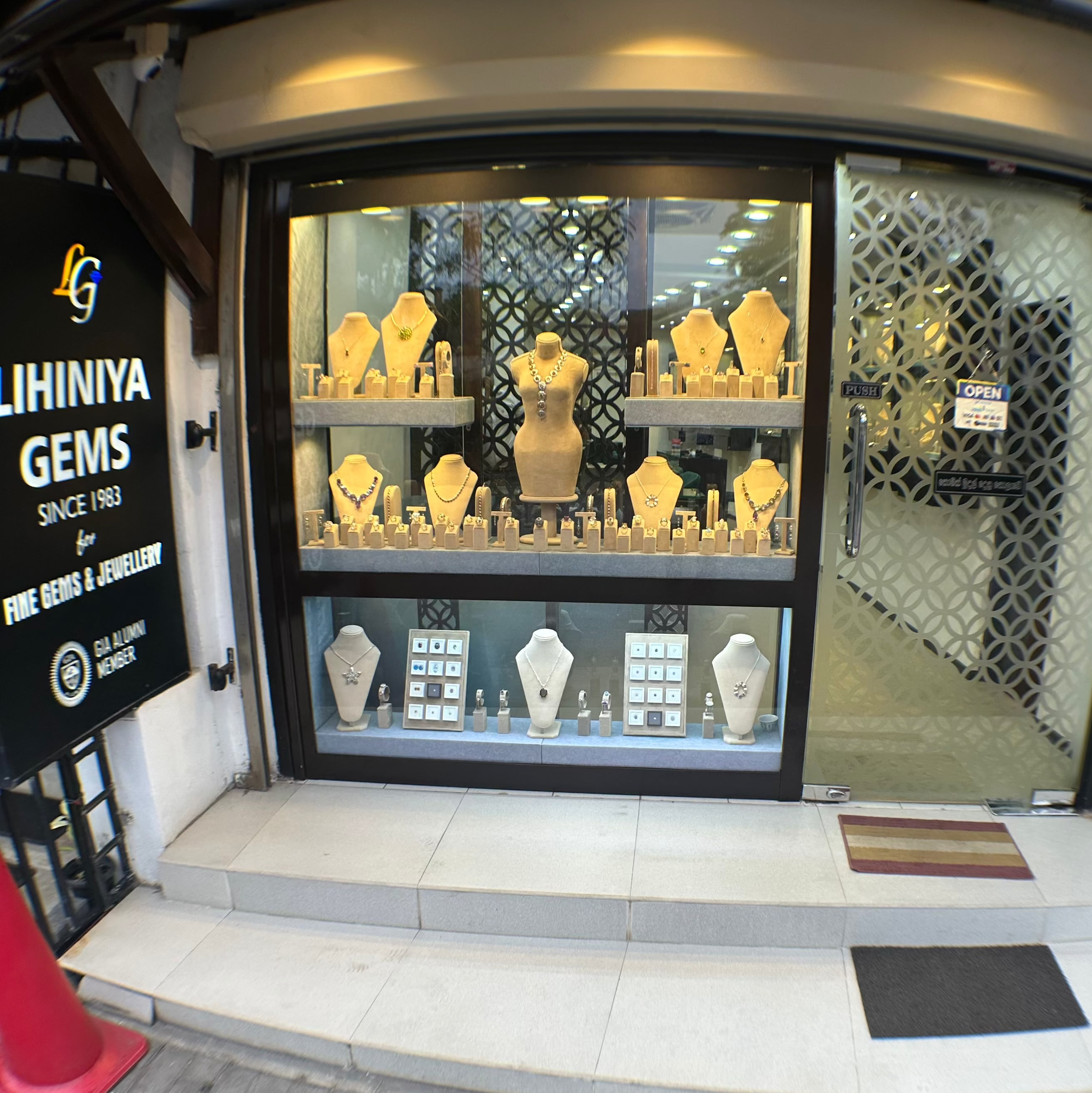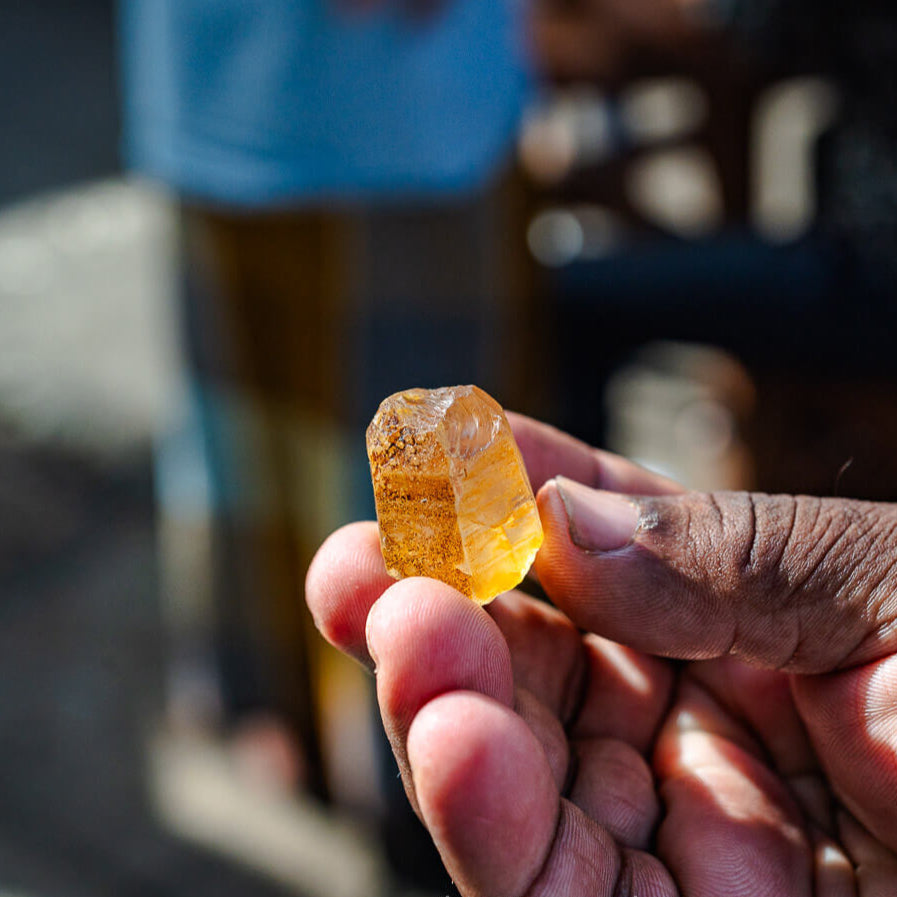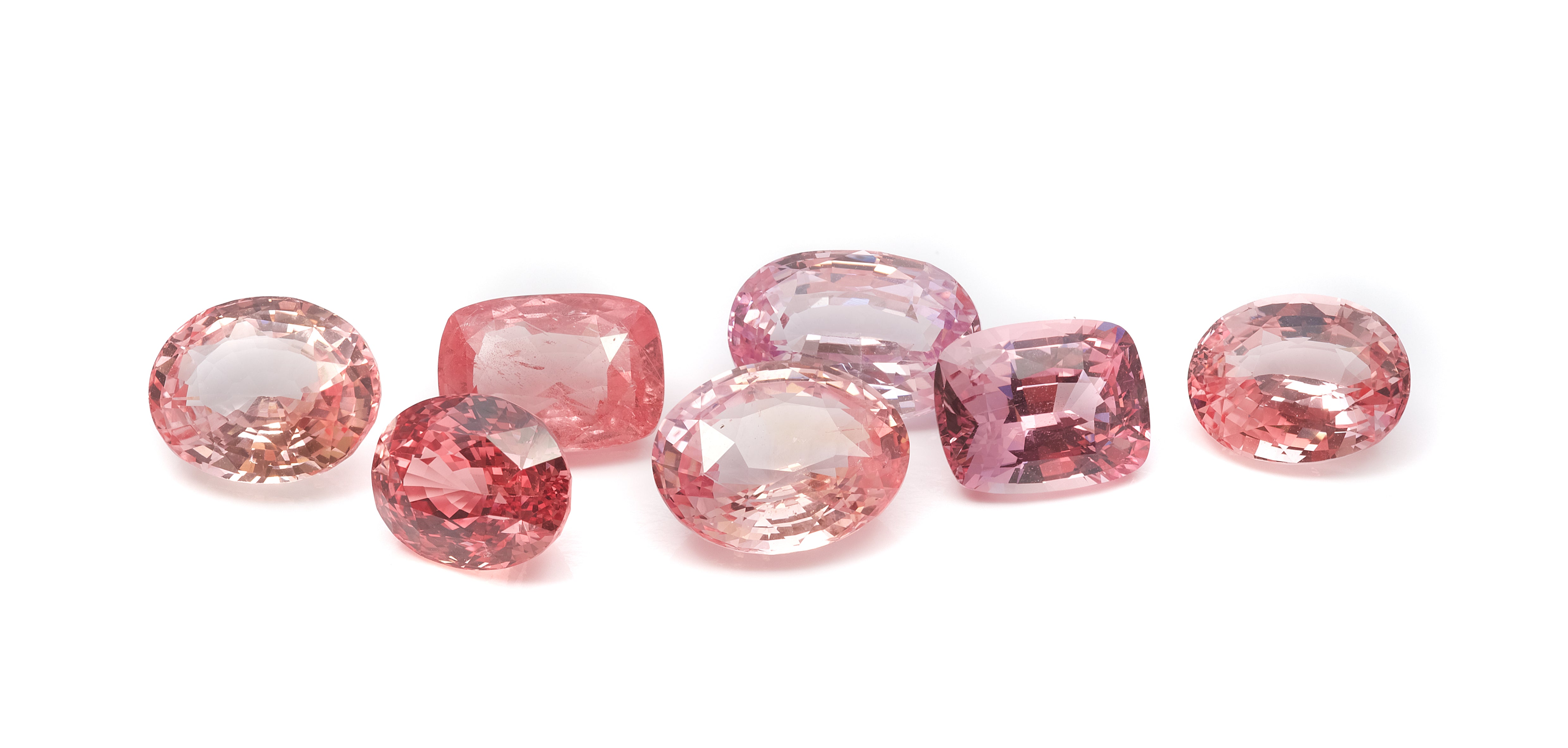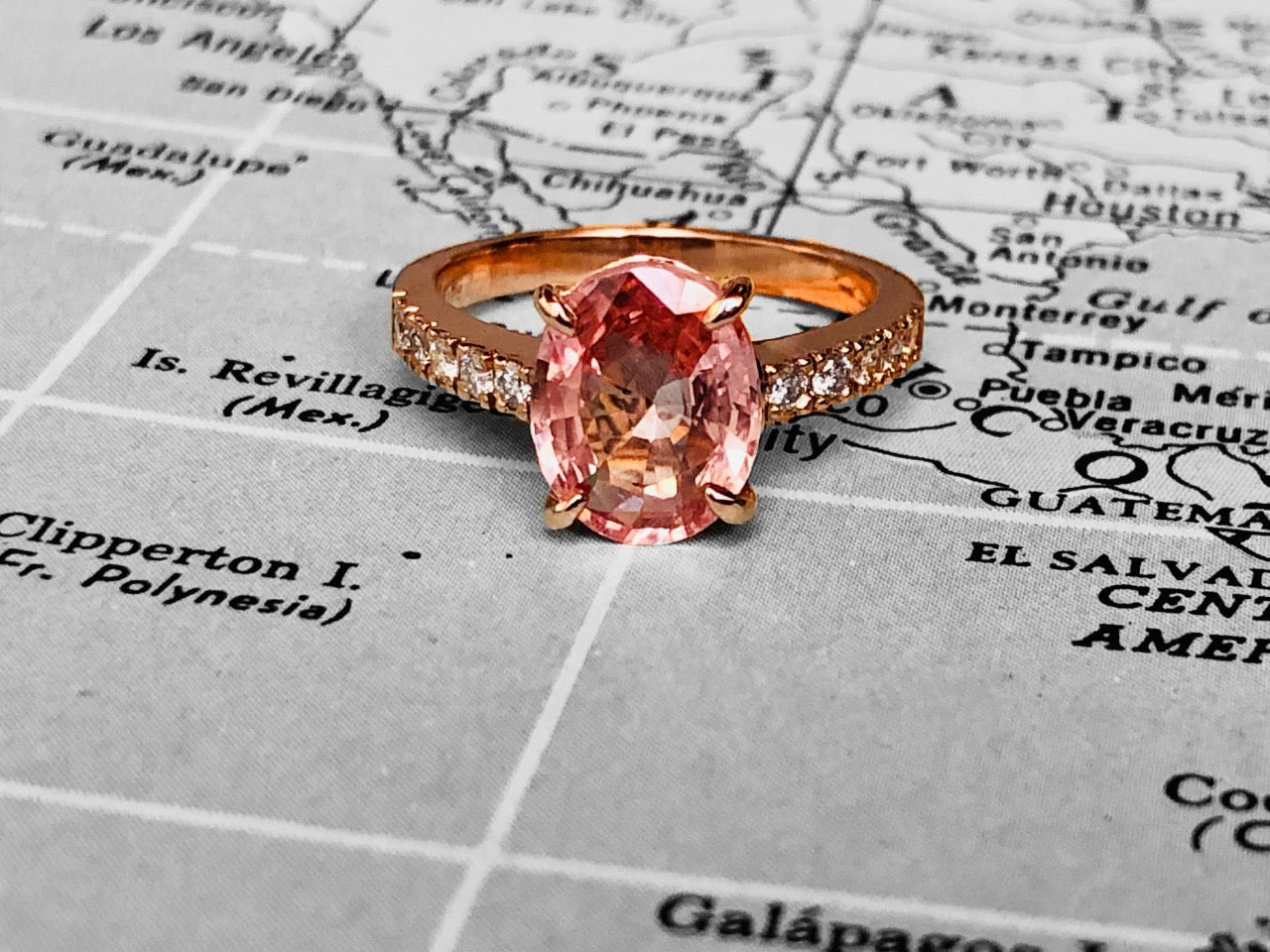
Subheading
ABOUT
Padparadscha sapphire is one of the rarest and most luxurious gemstones, renowned for its stunning beauty and rarity. Its color combines pink and orange hues, reminiscent of lotus flowers, sunsets, and tropical fruits. While not widely known to the public, it has been highly valued by gem experts and collectors for generations. Known as the "King of Sapphires," the Padparadscha sapphire stands out for its unique and captivating appearance.

Subheading
NAME
The name "Padparadscha," derived from the Sinhalese wordpadma raga, means "lotus flower," symbolizing Sri Lanka's national flower. The sapphire's unique pink-orange color reflects the lotus blossom and sunsets, embodying qualities of longevity, health, honor, and good fortune. While the Padparadscha sapphire is known for its salmon-colored hue, its shades can vary, sometimes showing zones of pink and yellow. This rare and exotic gemstone is one of the most prized in the world, with its vibrant, changing colors adding to its allure.
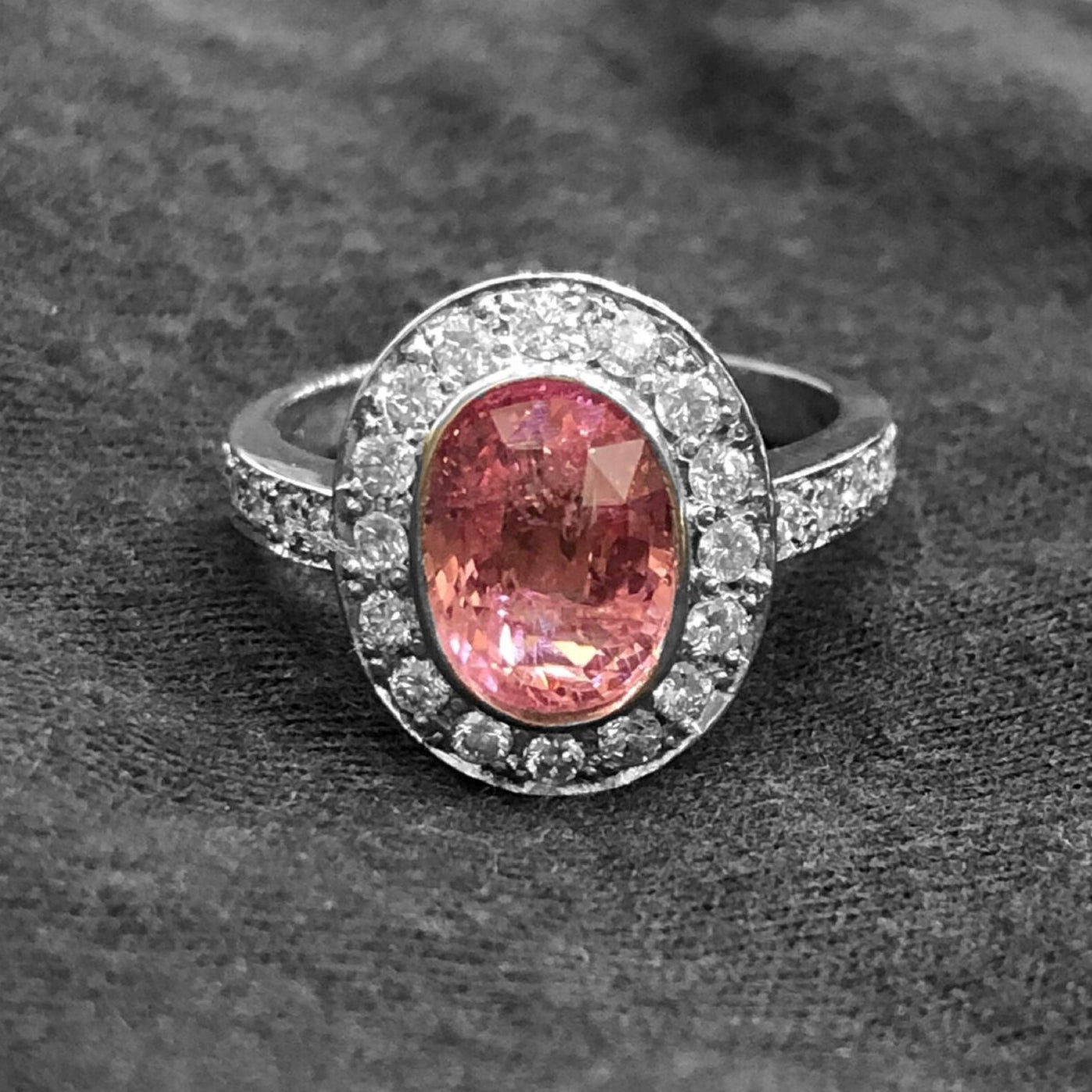
Subheading
COLOUR
Padparadscha sapphires display a range of hues from pink with orange tones ("orangy-pink") to orange with a hint of pink ("pinkish-orange"). These colors can vary from light to medium saturation, with each sapphire being unique in its color. The intensity of the hue plays a significant role in its value, with more intense colors being rarer and more valuable. The gemstone must also have even color distribution and be untreated, with only conventional heating allowed. The terms "Sunrise" and "Sunset" are used to describe sapphires with pink-dominant or orange-dominant colors, respectively. The ideal color combines pink-orange and orange-pink shades, often compared to a lotus blossom or tropical sunset.
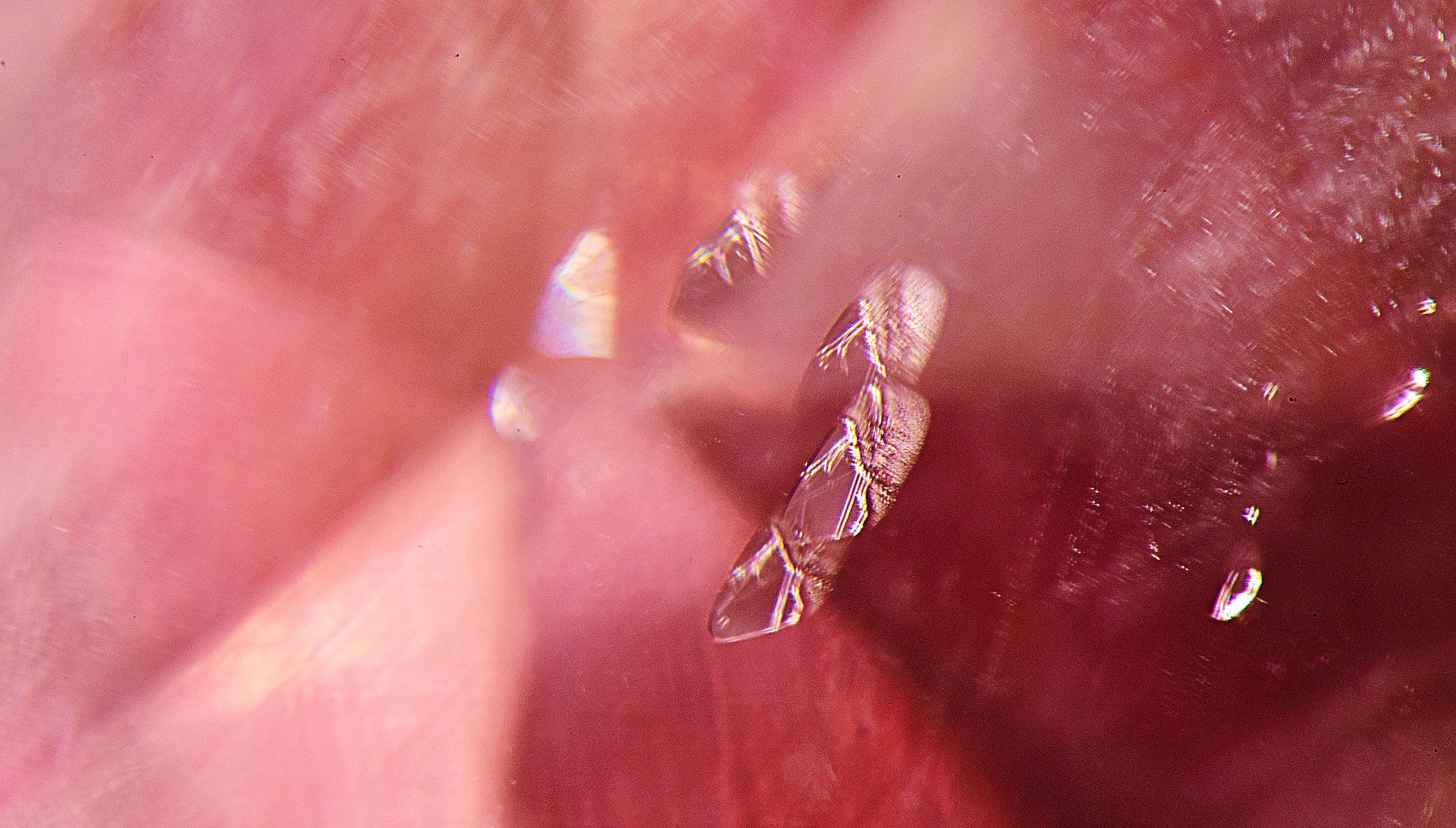
Treatment of Padparadscha Sapphires
Like other rubies and sapphires, Padparadscha sapphires are often heated to enhance their purity and color. This treatment, which involves lower temperatures, is typically used to optimize clarity rather than significantly change the color. Heavily heated Padparadscha sapphires don’t require special labeling, as the process is considered a standard improvement.
Untreated, natural Padparadscha sapphires (those that have not been heated) are much rarer and more valuable, especially if they feature a rich pink-orange hue. If you’re looking to invest in one of these rare gemstones, a non-heated Padparadscha is an ideal choice, and its value will likely increase over time.
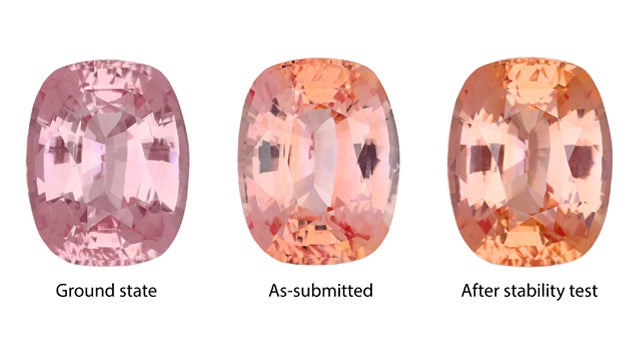
The Color Stability of Padparadscha Sapphires
Does the color instability of a Padparadscha sapphire affect its designation? To qualify as a Padparadscha, the sapphire must exhibit a harmonious pink-orange color. However, this alone may not be sufficient for all gem laboratories. Many now also require a color stability test as part of the evaluation, leading to occasional disagreements among labs and gem experts.
There are no standardized regulations for gemstone analysis, allowing each lab to define its own procedures. For instance, the SSEF (Swiss Gemological Institute) uses a fading test to assess color stability. If the test shows the color deviates from the expected range, the sapphire may not be classified as a true Padparadscha.
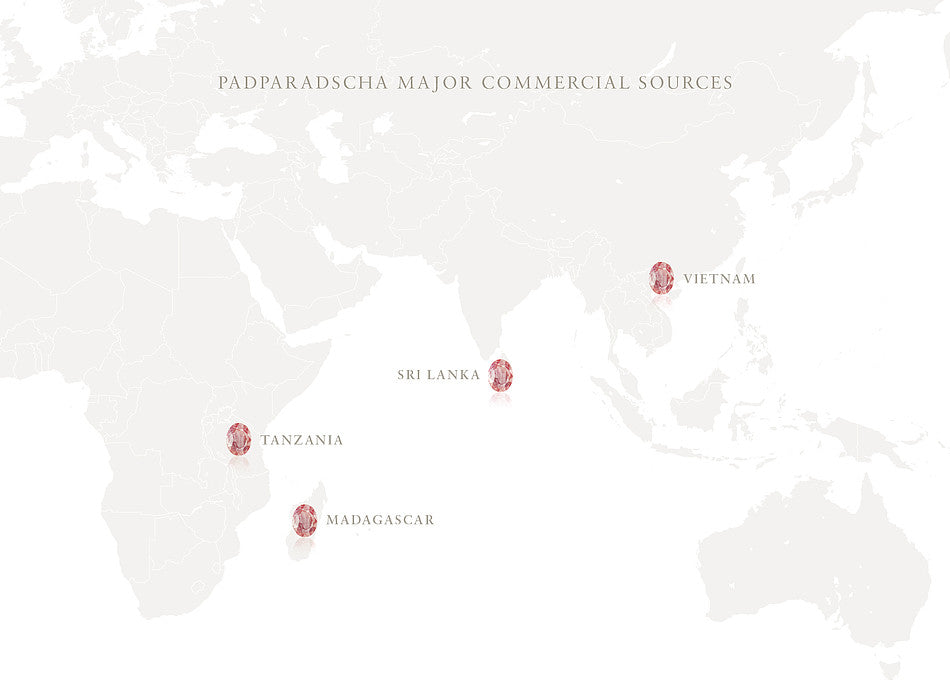
The Origins of Padparadscha Sapphires
For many years, Sri Lanka was considered the only true country of origin for Padparadscha sapphires. In recent years, however, stones have been found in Madagascar, Vietnam, and Tanzania whose saturation and color have been deemed worthy of the name Padparajah sapphire. Nevertheless, Sri Lanka remains the country of origin of the finest Padparadscha sapphires, the fantastic color diversity of the local flora is reflected in magnificent sapphires unearthed mainly in the regions of Ratnapura, Elahera and Kataragama in the south.
Some experts insist that genuine padparadschas can only come from Sri Lanka, which for centuries was the only source of this coveted stone. The prevailing opinion in the market is that the finest stones actually come from Sri Lanka, but Madagascar now produces a majority of the stones available in the market, which are also beautiful. The stones from Madagascar are usually more "pink" than "orange" and are a very nice and welcome addition to the Padparadscha offerings.

Spectrum of colour
Learn about coloured gemstones
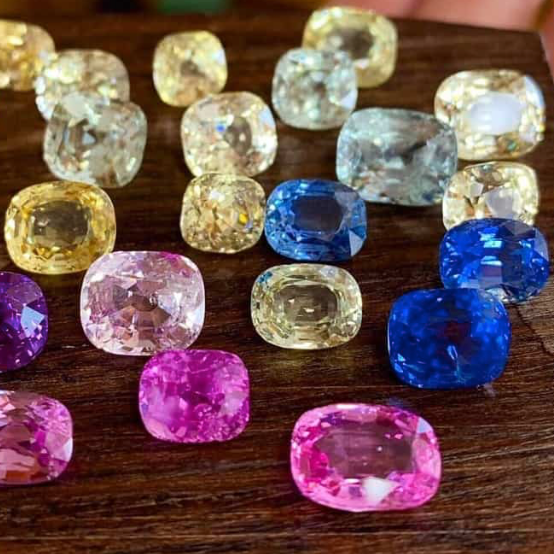
Spectrum of colours
Why Coloured Stones?
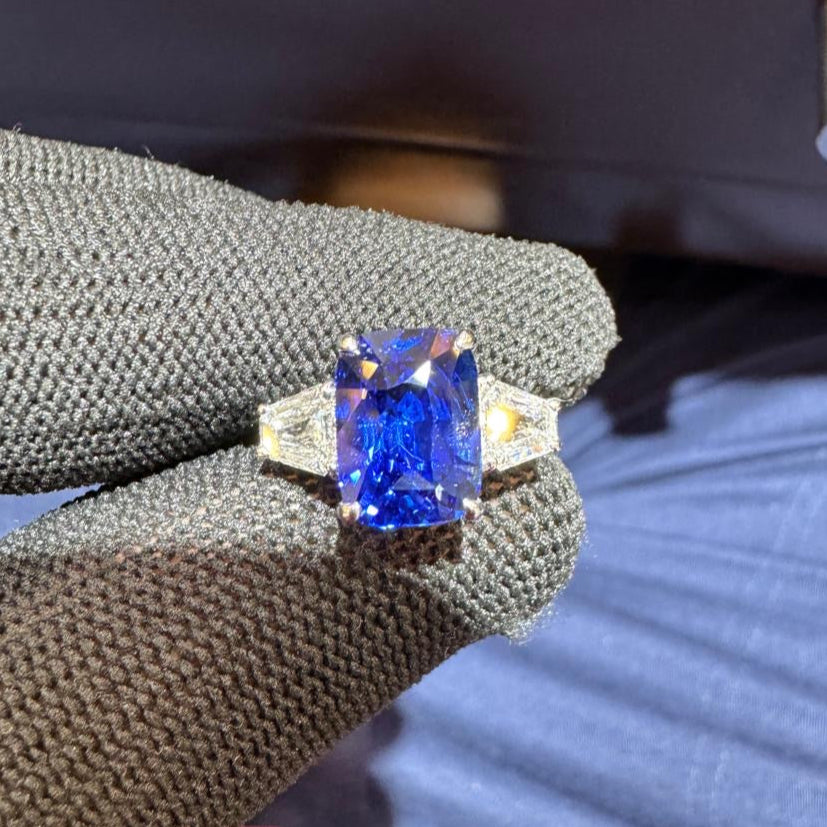
Spectrum of colours
Introduction to Sapphires
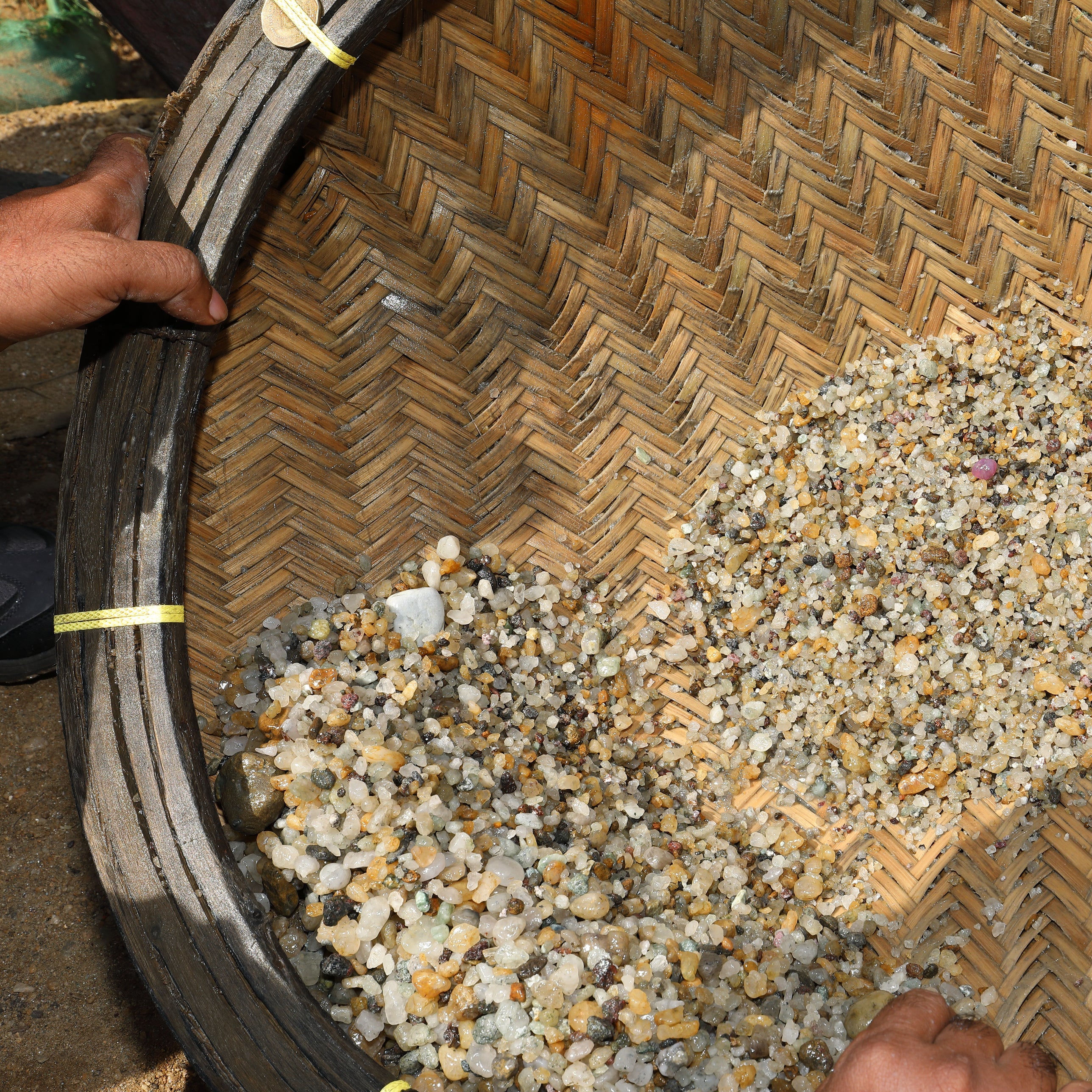
Spectrum of colours
Sapphires: Mine to market
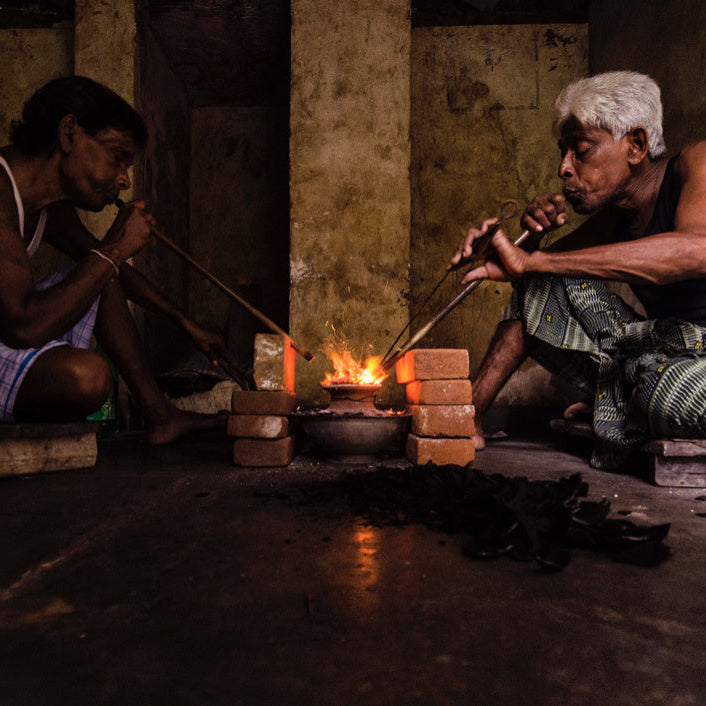
Spectrum of colours
Sapphires treatments

Spectrum of colours
Other coloured gemstones

Spectrum of colours
Introduction To Spinels

Spectrum of colours
How to pick your colored stone

